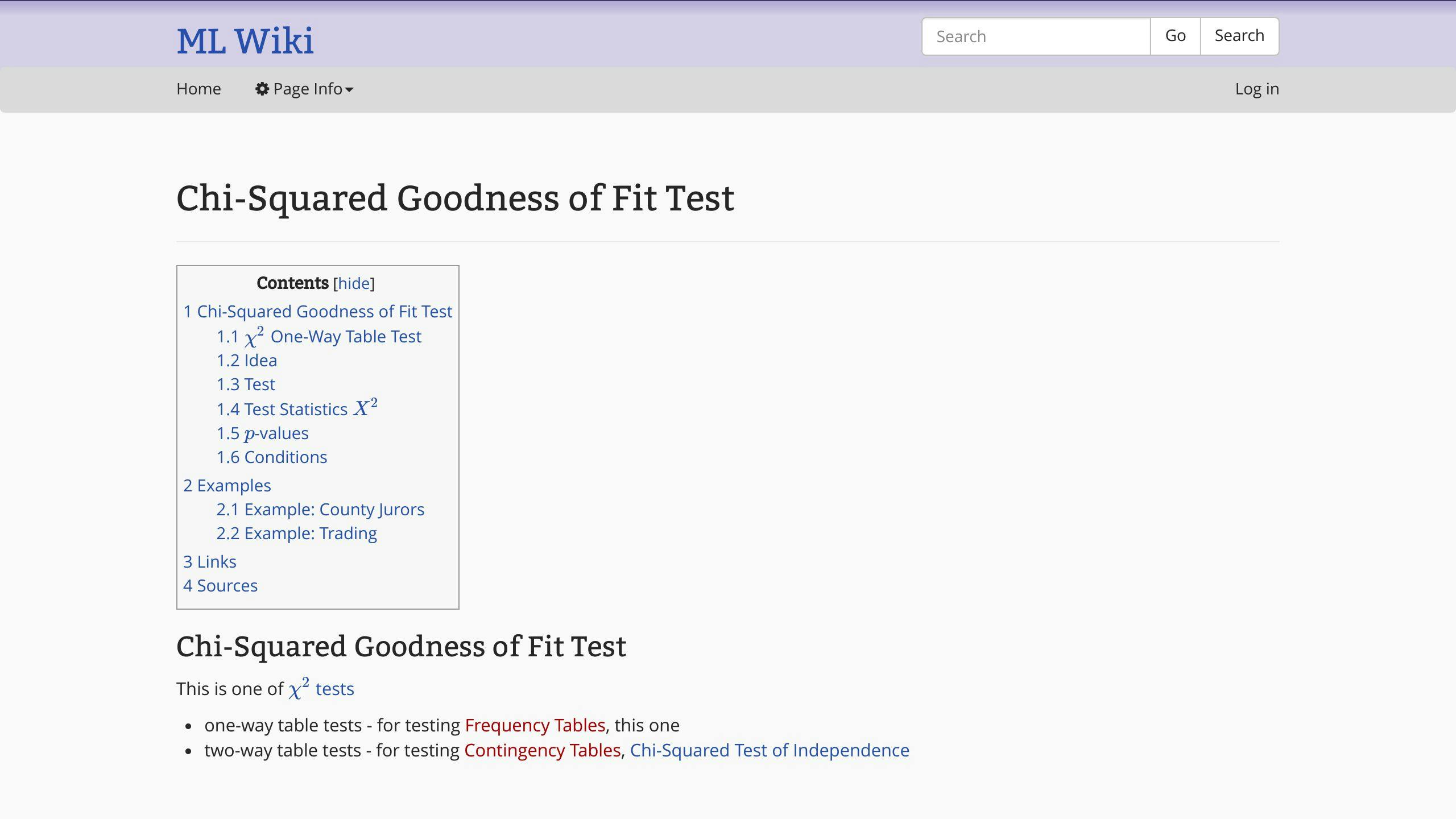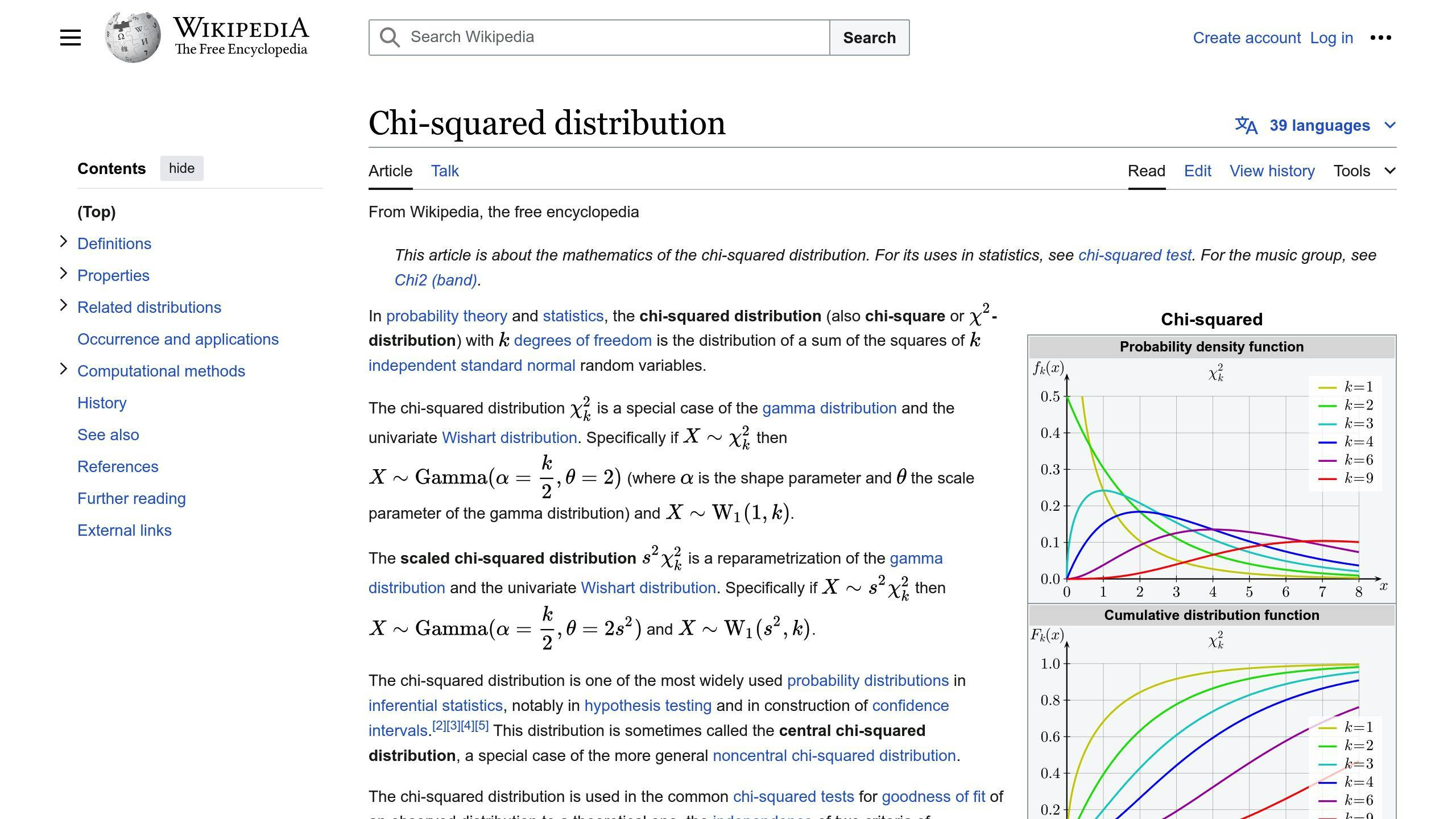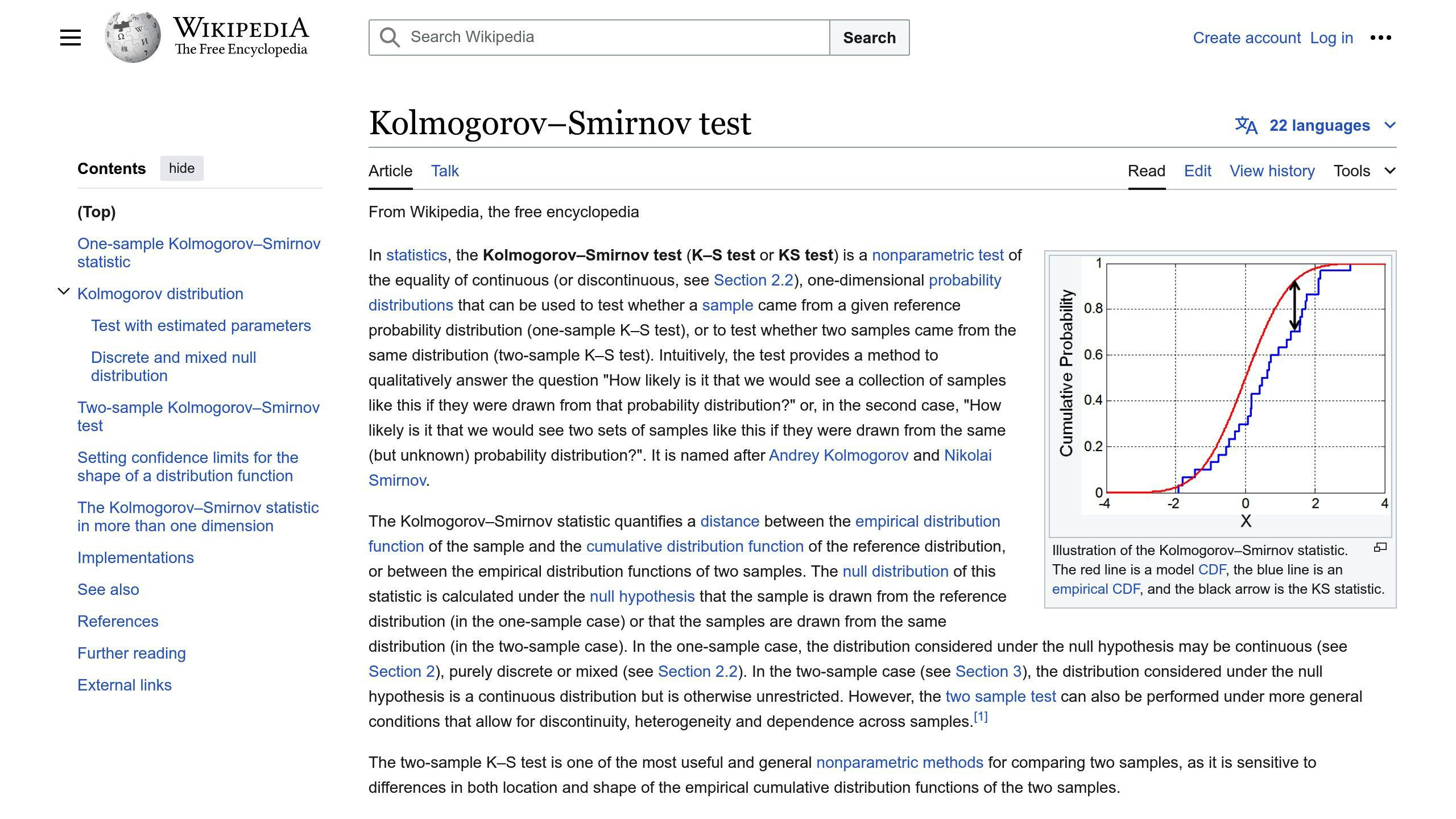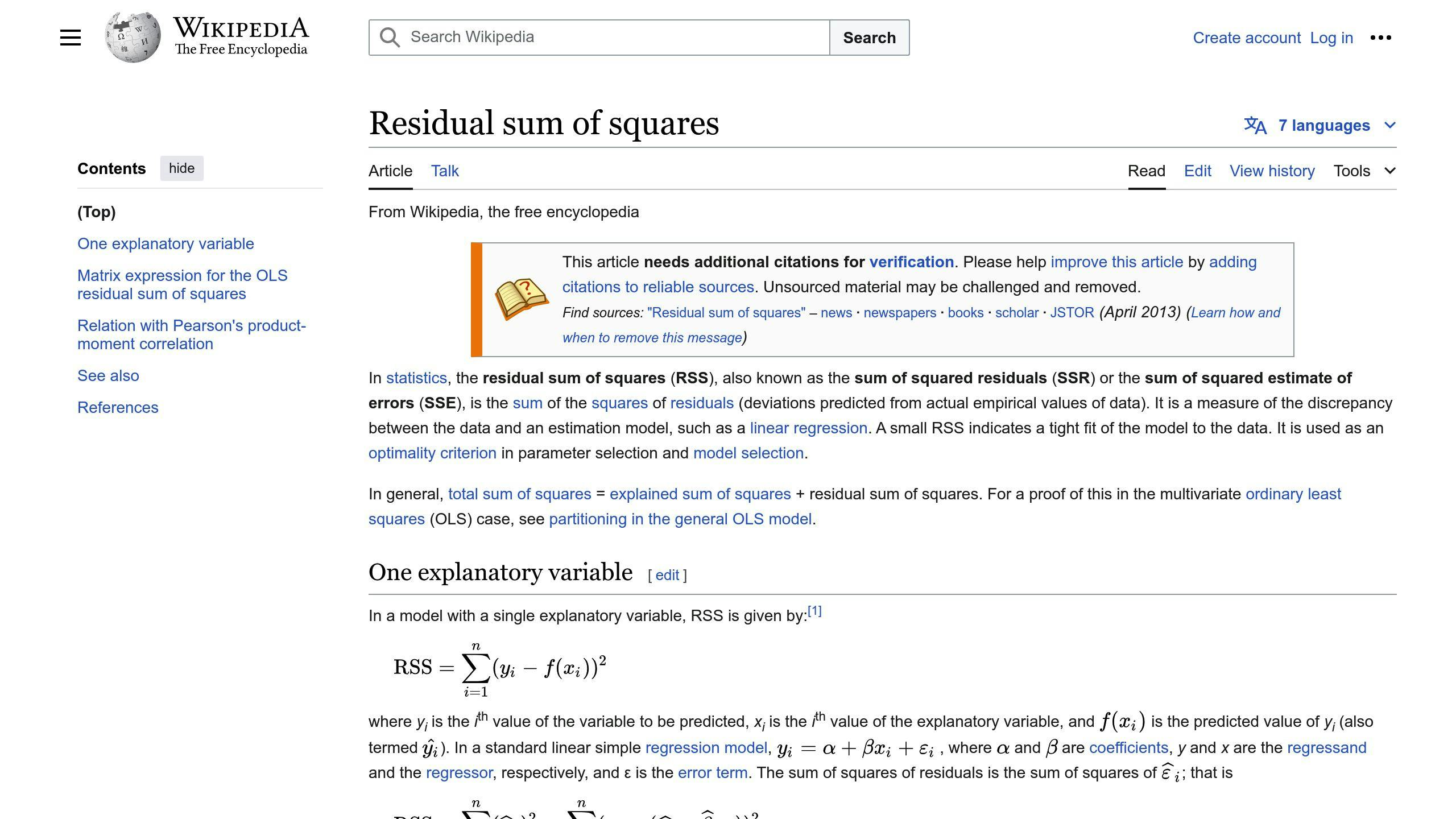- Related video from YouTube
- 1. The Saltwater Balancing Test
- 2. The Chi-Square Goodness-of-Fit Test
- 3. The Running Chi-Square Distribution Method
- 4. The Kolmogorov-Smirnov Test
- 5. The Sum of Squared Errors (SSE) Method
- Comparing the Testing Methods
- Final Thoughts
- FAQs
5 Ways to Test Dice for Bias
There are several methods to check if your dice are fair or biased:
-
Saltwater Test: A simple test to check for major imbalances by observing which number faces up when the die floats in saltwater. Easy to do but may miss slight biases.
-
Chi-Square Goodness-of-Fit Test: A statistical test that analyzes roll data to identify even minor biases. Requires at least 100 rolls for accuracy.
-
Running Chi-Square Distribution Method: Highly sensitive test that can detect tiny biases, but demands thousands of rolls and complex calculations.
-
Kolmogorov-Smirnov Test: Identifies moderate to large biases with hundreds of rolls. Easy to implement but sensitive to outliers.
-
Sum of Squared Errors (SSE) Method: Excels at finding bias, even small ones. Easy to use but assumes normal data distribution and outliers affect results.
| Method | Sample Size | Bias Detection | Ease of Use |
|---|---|---|---|
| Saltwater Test | Few rolls | Major imbalances | Very easy |
| Chi-Square Test | 100+ rolls | Minor biases | Moderate |
| Running Chi-Square | Thousands of rolls | Tiny biases | Difficult |
| Kolmogorov-Smirnov | Hundreds of rolls | Moderate to large biases | Easy |
| SSE Method | 1000+ rolls | Small biases | Easy |
When choosing a test, consider the sample size needed, sensitivity to bias, assumptions made, and ease of use. Testing dice regularly ensures fair gameplay by identifying even small biases that can significantly impact outcomes.
Related video from YouTube
1. The Saltwater Balancing Test
This test checks if your dice are fair by placing them in saltwater. Here's how it works:
How to Do It
- Fill a glass with water and add salt until the die floats
- Gently place the die in the saltwater
- Observe which number faces upwards
What to Look For
- If the die is balanced, different numbers should face up randomly
- If the same number(s) keep facing up, the die may be biased
Pros and Cons
| Pros | Cons |
|---|---|
| - Easy to do at home | - May not detect slight bias |
| - Requires few materials | - Doesn't work well for heavy dice |
| - Quick results | - Can't identify external imperfections |
Best For
The saltwater test is a simple way to check for major imbalances in a die's center of mass. It works best as an initial test for obvious bias.
Sample Size
You only need to test a few times to get an idea if the die is severely unbalanced.
2. The Chi-Square Goodness-of-Fit Test

The Chi-Square Goodness-of-Fit Test is a way to check if a die is fair or biased. It's more sensitive than the Saltwater Balancing Test and can find even small biases.
Sample Size
To do this test, you need to roll the die many times and record the results. At least 100 rolls are recommended, but more rolls give you better accuracy.
How to Do It
- Roll the die at least 100 times.
- Count how many times each number (1-6) comes up.
- Calculate the expected number of times each number should come up if the die is fair (1/6 for each number).
- Use the observed and expected numbers to calculate the Chi-Square statistic.
- Compare the Chi-Square statistic to a critical value or p-value to see if the die is biased.
Pros and Cons
| Pros | Cons |
|---|---|
| - Detects small biases | - Needs many rolls for accuracy |
| - Uses math and statistics | - Assumes independent rolls |
| - Online calculators available | - Calculations can be complex |
When to Use It
The Chi-Square Test is good for finding biases that the Saltwater Test might miss. But it takes more work and math skills.
If the test shows the die is biased, you may want to use a different die or try other tests to be sure the game is fair.
3. The Running Chi-Square Distribution Method

The Running Chi-Square Distribution Method is a statistical way to find bias in dice. It's an advanced version of the Chi-Square Goodness-of-Fit Test, making it better at spotting small biases.
Sample Size
This method needs a very large sample size, usually thousands of rolls, to give accurate results. The more rolls you make, the better it can detect bias.
How It Works
This method is more complex than the Chi-Square Test. You'll need to:
- Roll the die thousands of times and record the results.
- Calculate the running Chi-Square statistic.
- Compare the statistic to a critical value or p-value.
If the statistic exceeds the critical value, the die may be biased.
Pros and Cons
| Pros | Cons |
|---|---|
| - Highly sensitive to bias | - Requires thousands of rolls |
| - Detects small unfairness | - Assumes independent rolls |
| - Uses statistics and probability | - Complex calculations needed |
When to Use It
Use this method if you suspect a die has a small bias that other tests can't find. Its high sensitivity makes it useful for detecting even slight unfairness.
However, it takes a lot of time and effort due to the large sample size needed. You'll also need strong math skills to understand the statistics involved.
Limitations
This method assumes that each roll is independent and random. If the rolls are not truly independent, the results may be inaccurate.
Additionally, the large sample size required can make this method time-consuming and impractical for quick checks.
sbb-itb-9dfdbdd
4. The Kolmogorov-Smirnov Test

Sample Size
This test requires a moderate to large sample size. You'll need to roll the die hundreds of times to get accurate results.
Ease of Use
The Kolmogorov-Smirnov Test is relatively easy to implement. You can use statistical software or online tools to calculate the test statistic and p-value.
Detecting Bias
This test is sensitive to bias, but not as sensitive as the Running Chi-Square Distribution Method. It's better suited for detecting moderate to large biases, rather than small ones.
Limitations
| Limitation | Explanation |
|---|---|
| Assumes continuous, uniform data | If the data is discrete or non-uniform, the test may not be accurate. |
| Sensitive to outliers | Outliers can affect the results. |
The Kolmogorov-Smirnov Test is useful for testing dice bias, especially when you don't have time or resources for a large sample size. However, it's important to understand its limitations and use it with other methods to get a complete picture of the die's fairness.
5. The Sum of Squared Errors (SSE) Method

Sample Size
The Sum of Squared Errors (SSE) method requires a large sample size to give accurate results. It's best to roll the die at least 1,000 times.
How It Works
The SSE method is fairly easy to use, especially with statistical software or online tools. You can calculate the SSE value and p-value without much effort.
Finding Bias
The SSE method is very good at finding bias, even small biases. It works well for dice with complex or uneven distributions.
Limitations
| Limitation | Explanation |
|---|---|
| Assumes normal distribution | If the data doesn't follow a normal pattern, the SSE method may not be accurate. |
| Outliers affect results | Outliers can significantly change the SSE value and p-value, leading to incorrect conclusions. |
When to Use It
The SSE method is a powerful way to test dice bias. It's highly sensitive and easy to use. However, it's important to understand its limitations and use it along with other methods to get a complete picture of the die's fairness.
Comparing the Testing Methods
Here's a quick overview of the different ways to test dice for bias, along with their pros and cons:
Saltwater Test
| Pros | Cons |
|---|---|
| - Simple to do at home | - May miss small biases |
| - Needs few materials | - Doesn't work well for heavy dice |
| - Quick results | - Can't identify external flaws |
This basic test checks for major imbalances by seeing which number faces up in saltwater. It's easy but limited in detecting slight unfairness.
Chi-Square Goodness-of-Fit Test
| Pros | Cons |
|---|---|
| - Finds small biases | - Needs many rolls for accuracy |
| - Uses math and statistics | - Assumes independent rolls |
| - Online calculators available | - Calculations can be complex |
This statistical test is more sensitive than the saltwater method. It analyzes roll data to identify even minor biases but requires a large sample size.
Running Chi-Square Distribution Method
| Pros | Cons |
|---|---|
| - Highly sensitive to bias | - Requires thousands of rolls |
| - Detects tiny unfairness | - Assumes independent rolls |
| - Uses statistics and probability | - Complex calculations needed |
An advanced version of the Chi-Square test, this method can spot minuscule biases but demands a massive sample size and strong math skills.
Kolmogorov-Smirnov Test
| Pros | Cons |
|---|---|
| - Sensitive to bias | - Needs hundreds of rolls |
| - Easy to implement | - Sensitive to outliers |
| - Non-parametric | - Assumes continuous, uniform data |
This test can identify moderate to large biases with a moderate sample size. It's relatively easy to use but has some limitations.
Sum of Squared Errors (SSE) Method
| Pros | Cons |
|---|---|
| - Very good at finding bias | - Assumes normal distribution |
| - Easy to use | - Outliers affect results |
| - Works for complex distributions |
The SSE method excels at detecting bias, even small ones. It's user-friendly but assumes a normal data pattern.
When choosing a test, consider:
- Sample size needed: From a few rolls to thousands
- Sensitivity to bias: From major imbalances to tiny unfairness
- Assumptions made: Normal distribution, independent rolls, etc.
- Ease of use: From simple visual checks to complex calculations
Final Thoughts
Testing dice for unfairness is crucial for fair gameplay. This article covered five methods to detect bias, each with its own strengths and limitations. Here's a quick overview:
Saltwater Test
| Pros | Cons |
|---|---|
| - Simple to do at home | - May miss small biases |
| - Needs few materials | - Doesn't work well for heavy dice |
| - Quick results | - Can't identify external flaws |
This basic test checks for major imbalances by seeing which number faces up in saltwater. It's easy but limited in detecting slight unfairness.
Chi-Square Goodness-of-Fit Test
| Pros | Cons |
|---|---|
| - Finds small biases | - Needs many rolls for accuracy |
| - Uses math and statistics | - Assumes independent rolls |
| - Online calculators available | - Calculations can be complex |
This statistical test is more sensitive than the saltwater method. It analyzes roll data to identify even minor biases but requires a large sample size.
Running Chi-Square Distribution Method
| Pros | Cons |
|---|---|
| - Highly sensitive to bias | - Requires thousands of rolls |
| - Detects tiny unfairness | - Assumes independent rolls |
| - Uses statistics and probability | - Complex calculations needed |
An advanced version of the Chi-Square test, this method can spot minuscule biases but demands a massive sample size and strong math skills.
Kolmogorov-Smirnov Test
| Pros | Cons |
|---|---|
| - Sensitive to bias | - Needs hundreds of rolls |
| - Easy to implement | - Sensitive to outliers |
| - Non-parametric | - Assumes continuous, uniform data |
This test can identify moderate to large biases with a moderate sample size. It's relatively easy to use but has some limitations.
Sum of Squared Errors (SSE) Method
| Pros | Cons |
|---|---|
| - Very good at finding bias | - Assumes normal distribution |
| - Easy to use | - Outliers affect results |
| - Works for complex distributions |
The SSE method excels at detecting bias, even small ones. It's user-friendly but assumes a normal data pattern.
When choosing a test, consider:
- Sample size needed: From a few rolls to thousands
- Sensitivity to bias: From major imbalances to tiny unfairness
- Assumptions made: Normal distribution, independent rolls, etc.
- Ease of use: From simple visual checks to complex calculations
Testing dice regularly is vital for ensuring fair gameplay. Even small biases can significantly impact game outcomes. Choose the right method based on your needs and resources to maintain the integrity of your games.
FAQs
How do you check if dice are fair?
There are a few ways to test if your dice are fair or biased:
- Saltwater Test
- Fill a glass with saltwater until the die floats
- Gently place the die in the water
- Note which number faces up
- If the same number(s) keep facing up, the die may be biased
- This simple test checks for major imbalances but can miss slight biases
- Statistical Tests
| Test | Description |
|---|---|
| Chi-Square Test | Analyzes roll data to find even minor biases, but needs many rolls (100+) for accuracy. Online calculators are available. |
| Running Chi-Square Method | Highly sensitive test that can detect tiny biases, but requires thousands of rolls and complex calculations. |
| Kolmogorov-Smirnov Test | Identifies moderate to large biases with hundreds of rolls. Easy to implement but sensitive to outliers. |
| Sum of Squared Errors (SSE) | Excels at finding bias, even small ones. Easy to use but assumes normal data distribution. Outliers affect results. |
Key Considerations
When choosing a test method, consider:
- Sample Size: From a few rolls to thousands
- Sensitivity: From major imbalances to tiny unfairness
- Assumptions: Normal distribution, independent rolls, etc.
- Ease of Use: Simple visual checks vs. complex calculations
Testing dice regularly helps ensure fair gameplay. Even small biases can significantly impact outcomes. Choose the right method based on your needs and resources.